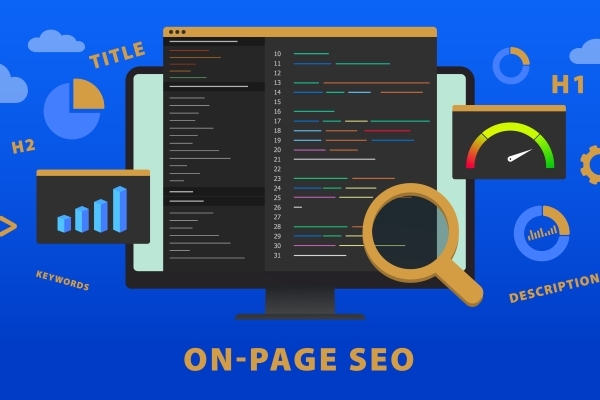
Top 5 SEO Techniques to Increase Website Traffic
Search Engine Optimisation (SEO) has become a vital tool for businesses aiming to increase their online visibility. With millions of websites vying for attention, effective SEO strategies are essential for standing out in search engine results. Unlike paid advertisements, organic traffic offers a cost-effective, long-term solution for attracting relevant visitors to your website. By improving search rankings, businesses can reach their target audience without constantly investing in ads. This article aims to guide readers through five proven SEO techniques that can drive organic traffic, helping to boost both visibility and engagement for sustainable growth.
- Conduct Comprehensive Keyword Research
What is keyword research?
Keyword research is the process of identifying and analysing the specific terms and phrases that users type into search engines when looking for content relevant to your business. By understanding what your audience is searching for, you can tailor your content to meet their needs. This involves researching popular, relevant keywords and phrases that reflect your website’s theme or products. The goal is to uncover terms that will drive targeted traffic to your site.
Why it matters:
Effective keyword research is crucial because it helps align your content with user search intent, increasing the chances of appearing higher in search engine results pages (SERPs). By targeting the right keywords, you can connect with users actively looking for information, services, or products similar to what your website offers. Proper keyword targeting improves the relevance of your content, resulting in better user engagement, reduced bounce rates, and improved conversion rates.
How to implement:
To conduct comprehensive keyword research, start by using popular SEO tools like Google Keyword Planner, SEMrush, or Ahrefs. These tools help identify valuable keywords and assess their search volume, competition, and trends. Focus on long-tail keywords, which are more specific and often less competitive, making it easier to rank. Also, balance primary keywords with secondary ones to cover a broader range of search queries, ensuring your content is optimised for various user intents.
- Optimise On-Page SEO Elements
Definition of on-page SEO:
On-page SEO refers to the process of optimising individual web pages to improve their ranking in search engine results and attract relevant traffic. This involves enhancing various elements within your website, such as content, HTML structure, and internal links. The goal is to make each page search engine-friendly while ensuring a better user experience, both of which contribute to higher rankings and improved organic traffic over time.
Key elements to focus on:
Several key elements are crucial for effective on-page SEO. Title tags and meta descriptions should be compelling and optimised with relevant keywords to encourage users to click on your link in search results. Headings and subheadings (H1, H2, H3) help structure your content for readability and improved SEO, making it easier for search engines to understand your page. Additionally, URLs should be concise, descriptive, and include keywords. Internal linking strengthens your site structure by directing visitors to other valuable pages.
Best practices:
To maximise the effectiveness of on-page SEO, ensure all content is optimised with an appropriate keyword density that reflects user intent without overstuffing. Alt tags for images are also essential for accessibility and search engine understanding. Your website should be mobile-friendly, as Google prioritises mobile-responsive designs. Regularly review and update your pages to maintain their relevance and alignment with SEO standards, helping them perform better in search results.
- Create High-Quality, Engaging Content
Importance of quality content in SEO:
High-quality content plays a crucial role in SEO, as Google prioritises content that is valuable, informative, and satisfies user intent. Content that directly addresses what users are searching for is more likely to rank higher in search results. Well-written, engaging articles that answer questions, solve problems, or provide insights help build trust and authority with both users and search engines, ultimately driving more organic traffic to your site.
Content strategies:
To create engaging content, focus on understanding user intent—whether it’s informational, navigational, or transactional. Tailor your articles accordingly to meet those needs. Longer, in-depth articles tend to perform better in search rankings, as they provide comprehensive coverage of a topic, but they must remain engaging. Originality is key; avoid duplicate content by ensuring your articles are unique and relevant. Incorporating multimedia like images and videos enhances user experience, increasing dwell time on your site.
Actionable tip:
Regularly update your content to keep it fresh and relevant. Search engines favour sites that consistently provide current, valuable information, which can positively impact your ranking and overall traffic.
- Improve Website Load Speed and Mobile-Friendliness
Why site speed and mobile optimisation matter:
Website load speed and mobile optimisation are crucial for SEO because Google uses these factors when determining search rankings. A slow-loading or non-responsive website can lead to higher bounce rates, as users tend to leave sites that take too long to load. This negatively impacts user experience and overall engagement. Fast, mobile-friendly websites are more likely to rank higher, providing a better user experience and boosting organic traffic from both desktop and mobile users.
How to improve site speed:
Improving your site’s load speed is essential for SEO. Compress images and media files to ensure they are optimised for the web, reducing page load times. Enabling browser caching and minifying CSS, JavaScript, and HTML can further improve speed by reducing the amount of data users need to download. Additionally, using a Content Delivery Network (CDN) can help deliver content quickly to users, regardless of their geographic location, by distributing server load and reducing latency.
Mobile-friendly strategies:
To optimise your site for mobile users, implement a responsive web design that automatically adjusts to different screen sizes, ensuring a seamless experience across devices. Mobile-friendliness is a key ranking factor in Google’s mobile-first indexing, making it essential for SEO. Use tools like Google’s Mobile-Friendly Test to check your site’s performance on mobile devices and identify any issues. Ensuring your website is optimised for mobile will enhance user experience and improve search rankings.
- Build High-Quality Backlinks
What are backlinks?
Backlinks are links from other websites that point to your content, acting as endorsements of your website’s authority and relevance. Search engines like Google view these external links as signals of credibility, which can significantly improve your search rankings. The more high-quality backlinks you acquire from reputable websites, the more authority your site gains in the eyes of search engines, leading to increased organic traffic and higher visibility.
Why backlinks are crucial for SEO:
Backlinks are one of the most important factors Google considers when ranking web pages. High-quality backlinks from trusted websites serve as a vote of confidence, indicating that your content is valuable and reliable. The more authoritative sites that link to your content, the higher your website is likely to rank in search engine results pages (SERPs). However, not all backlinks are equal, and quality matters more than quantity when it comes to SEO performance.
Effective backlink strategies:
To build a strong backlink profile, employ strategies such as guest posting on reputable industry websites, where you can include links back to your content. Outreach campaigns are another effective method, as building relationships with bloggers and influencers can lead to natural backlink opportunities. Additionally, broken link building involves identifying broken links on other websites and offering your content as a replacement, helping both parties while earning you valuable backlinks.
Actionable tip:
Avoid spammy, low-quality backlinks, as they can harm your website’s SEO. Focus on building high-quality, relevant links from trusted sources to maintain your site’s credibility and improve your search rankings.
In summary, the five SEO techniques—comprehensive keyword research, optimising on-page elements, creating high-quality content, improving website load speed and mobile-friendliness, and building high-quality backlinks—are essential strategies for driving organic traffic. Each technique has the potential to improve your site’s visibility and ranking in search engine results. However, SEO is a long-term process that requires consistency and patience. Results won’t happen overnight, but by gradually implementing these strategies, you will start to see steady improvements in your search rankings and increased traffic, contributing to sustainable online growth over time. Start today and watch your efforts pay off.







